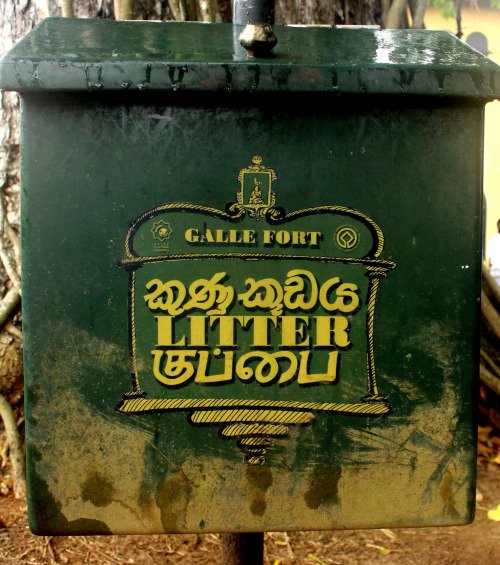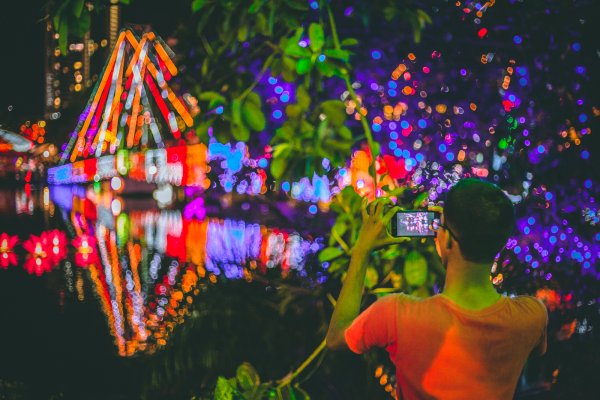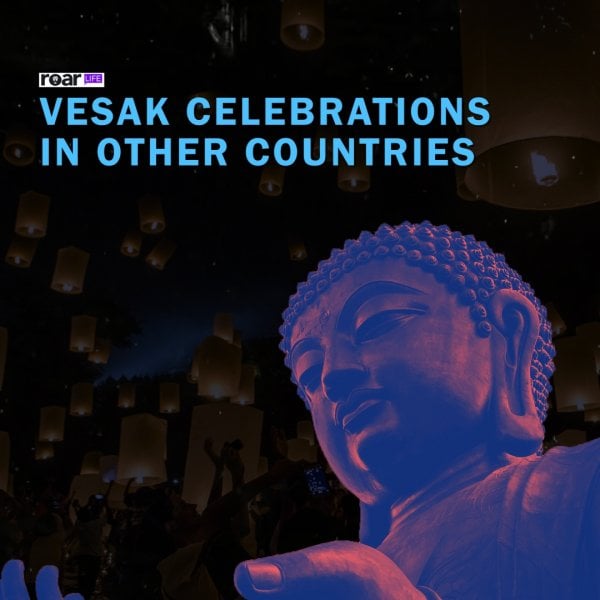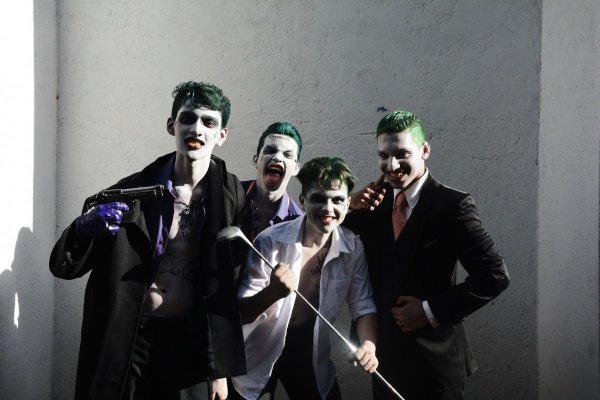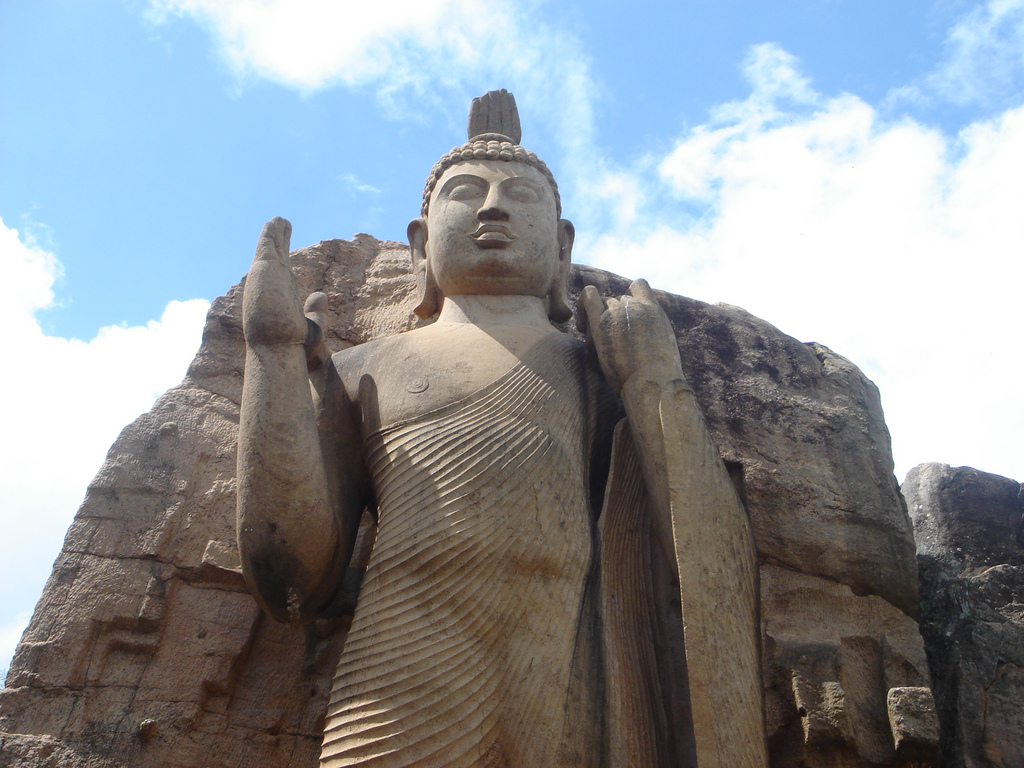
As the crow flies, the two magnificent standing Buddha images of Avukana and Sasseruwa are a mere 10 kilometres apart. At first glance, they bear many similarities; so much so that the famed British archaeologist H. C. P. Bell dubbed the twin statues as “Gog and Magog”. Several legends exist on the creation of the two statues, but which of these legends are closest to the truth, and are these really ‘twin’ statues?
The Facts
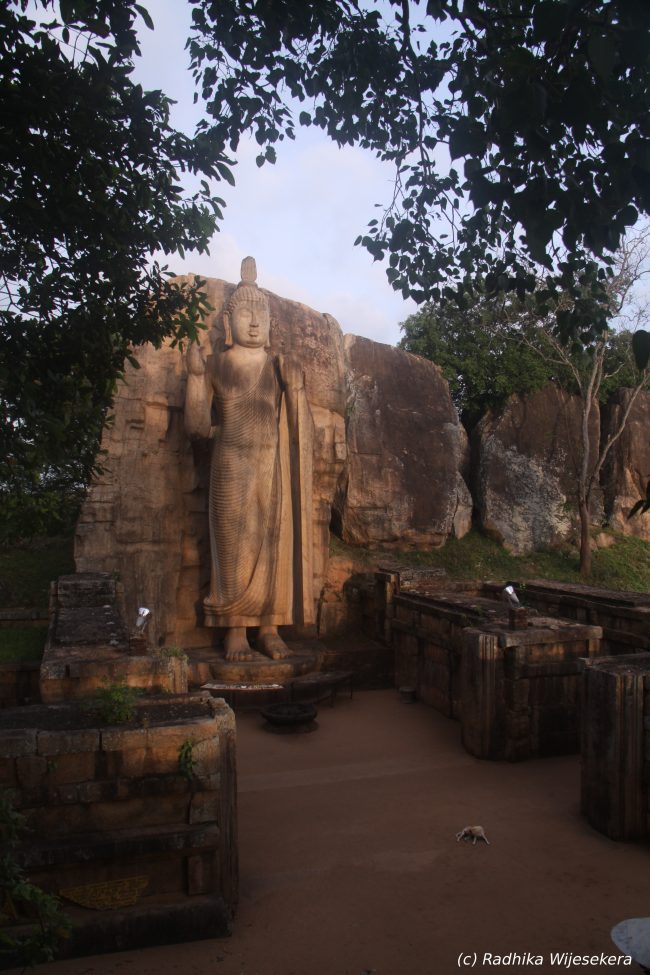
The Avukana Buddha statue at dawn. Image credit: Radhika Wijesekera
Carved out of a single block of granite and standing at an impressive 43 feet (13 metres), the Avukana Buddha statue is the epitome of fine stone craftsmanship. It is arguably the most finely executed and best-preserved statue in the country. The statue faces the rising sun, and beautifully lights up in the sun’s first rays, making this one of the most charming and magical sights in Sri Lanka. It is believed that the entire image was once covered in gold, and indeed, upon closer inspection, a few specks of gold are still visible upon the rock today.
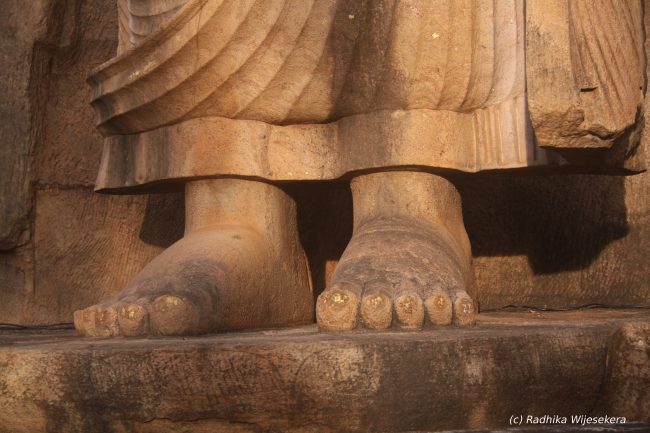
Specks of gold, still visible on the Avukana Buddha Statue today. Image credit: Radhika Wijesekera
The statue faces the mighty Kala Wewa, which was built by King Dhatusena in the 5th century. It is not quite certain which monarch commissioned the Avukana Buddha, although it is assumed that this too was done under the orders of King Dhatusena since the statue dates back to the same era.
This is an almost completely free standing image, with just a narrow strip of stone attaching it to the granite from which it has been hewn. The back of the statue is as carefully carved as the front, and indeed, the attention to detail is magnificent.
The Avukana Buddha’s eyes are wide open, giving it a rather severe expression. The hands take on the gesture known as the asivamudra (that is, the gesture of giving or blessing). The flame atop it, as well as the lotus pedestal at the base, are later additions.
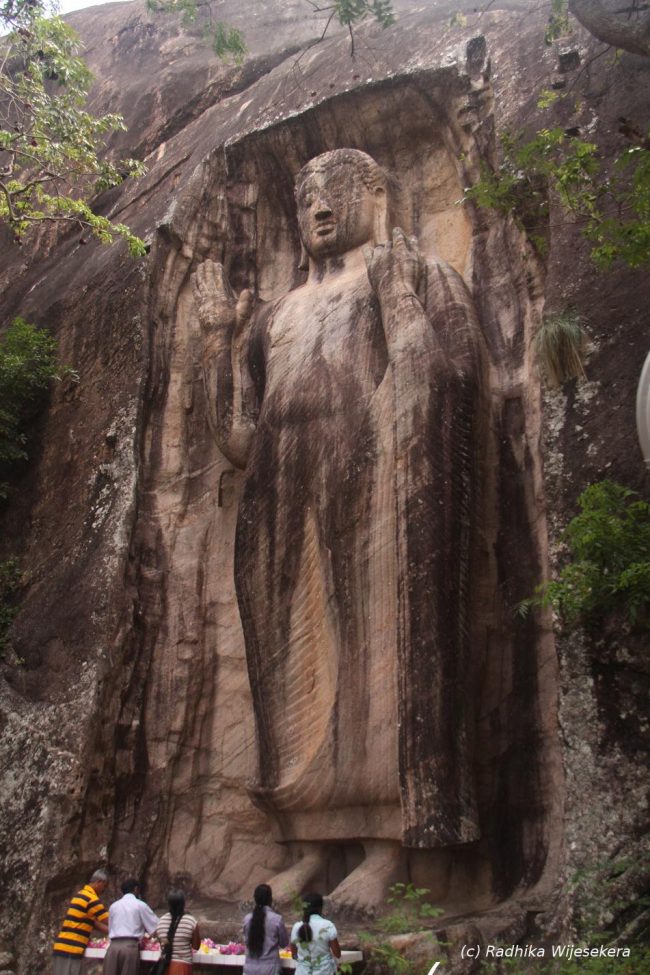
The mighty Sasseruwa Buddha Statue. Image credit: Radhika Wijesekera
Though at first glance, the two statues appear to be very similar, upon closer inspection of the finer details, it’s evident that this really is not the case. The Sasseruwa colossus is a few inches shorter than the Avukana Buddha. The robe has been carved such that it clings to the body. Here, the similarities end.
The Sasseruwa Buddha statue is part of the Reswehera monastery complex. The significance of this temple is that at the heart of it is one of the first 32 saplings of the Jaya Sri Maha Bodhi tree in Anuradhapura, which was planted here by King Devanampiyatissa (237 BCE). A stone stairway leading upwards from the Bodhi tree alights at the Sasseruwa Buddha statue. This monastery complex comprises of almost 100 caves in which the monks of yore spent their time in quiet meditation. A few are still in use today. There is also a small stupa, believed to have been built under the orders of King Walagamba (believed to have lived around 100 BCE). In addition to these, the temple premises have two rock cave image houses, within which are some exquisite statues and paintings. The larger of the two houses a reclining Buddha statue that is 39 feet long. It has two features that are quite unique; the first is that it is possible to walk right around the statue. Prior to being plastered, the statue was adorned with an actual cotton robe. Plastering was done on top of this robe, presumably to aid in creating a more realistic finish to the garment. Today, in many places, particularly at the back of the statue, the plaster has worn off and the cotton robe has been exposed.
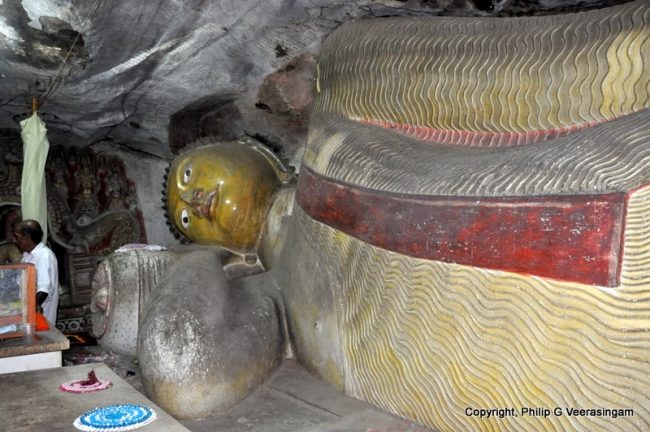
The 39 foot reclining Buddha statue in one of the image houses at the temple. Image credit: Philip G. Veerasingam
As for the workmanship of the Sasseruwa Buddha image, it is both unfinished, and unrefined. The flame atop the head is absent. One ear is incomplete. The pedestal upon which it stands is merely a rectangular block of stone. The fine detail of the fingers and toes of the Avukana statue are completely absent in the Sasseruwa Buddha.
However, it has been carved out of the shallow niche in an impressively large cliff; and much of the back of the statue is linked to the rock surrounding it.
This statue takes on the abayamudra gesture (that of fearlessness). The expression is soft, and the position of the right hand is more gentle.
The Legends
Several legends are linked with the origins of these two statues.
1. It is said that the sculpturer carried out a trial of his intended masterpiece upon the stone cliff at the Reswehera monastery premises. Having perfected his skills in the process, he then began work on the Buddha statue at Avukana.
2. Not too different from the first legend, is another which says that the sculpturer abandoned his work at Sasseruwa when a crack appeared in the rock, and he began work on an entirely new image at Avukana.
3. Yet another story says that these two statues are the result of a competition between a master sculptor and his pupil: the more magnificent of the two having been carried out by the master, who, upon having completed his work, rang a bell. This was heard at the Sasseruwa site, at which point, the pupil, conceding to defeat in this competition, had abandoned his work.
4. One more tale states this vice versa; that, in the competition between master and pupil, it is the pupil who completed the Avukana Buddha image and rang the bell. Conceding defeat, the master had abandoned his own work at Reswehera.
Which Legend Is True?
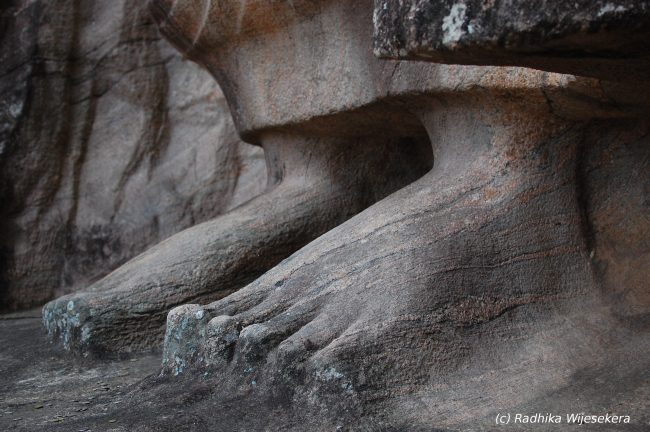
Note the lack of detail in the feet and toes of the Sasseruwa Buddha. Image credit: Radhika Wijesekera
According to the head priest at the Reswehera temple, Ven. Vajiratissa, this statue is not incomplete at all. Along with the stupa, the standing Buddha statue was commissioned by King Mahasen, and not King Dhatusena, making this much older than the Buddha at Avukana. The finer details of the sculpture had succumbed to the rigors of nature and time, but what remains of the statue is perfect. Nothing is truly amiss in this great statue. Even the flame that one expects to see at the top of the head is not really missing but was never included to begin with, because it would not have complemented the gentle nature of the expression of the face.
The twin statues are not really twin statues at all. The legends surrounding them are simply legends, and nothing more.
Featured image courtesy: commons.wikimedia.org
